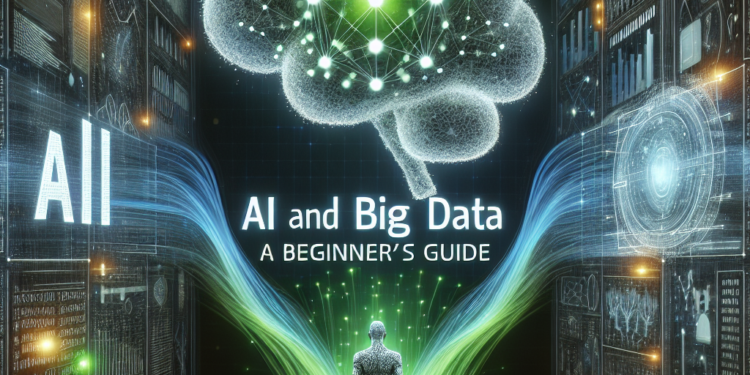Artificial Intelligence (AI) and Big Data are two of the most talked-about topics in the world of technology today. While they may seem complex and intimidating at first glance, they are actually quite simple concepts that anyone can understand. In this beginner’s guide, we will break down AI and Big Data into easy-to-understand terms and explain how they are changing the way we live, work, and play.
What is Artificial Intelligence?
Artificial Intelligence, or AI, is the simulation of human intelligence processes by machines, especially computer systems. In other words, AI enables machines to think, learn, and make decisions like humans do. This is achieved through the use of algorithms, which are sets of instructions that tell a computer how to solve a particular problem or perform a specific task.
There are many different types of AI, ranging from basic machine learning algorithms that can identify patterns in data to more advanced systems that can understand and respond to natural language. One of the most common uses of AI today is in virtual assistants like Siri and Alexa, which use natural language processing algorithms to understand and respond to user queries.
AI is also used in a wide range of other applications, such as self-driving cars, chatbots, and recommendation systems. In the future, AI is expected to revolutionize industries such as healthcare, finance, and transportation, by enabling machines to perform tasks that were previously thought to be beyond their capabilities.
What is Big Data?
Big Data refers to the large volumes of data that are generated by organizations and individuals every day. This data comes from a wide range of sources, such as social media, sensors, and mobile devices, and can include everything from text and images to video and audio. Big Data is characterized by its volume, velocity, and variety, which makes it difficult to process using traditional database management systems.
To make sense of Big Data, organizations use specialized software tools called Big Data analytics platforms. These platforms use advanced algorithms to analyze large datasets and extract valuable insights that can help organizations make better decisions and improve their business processes.
One of the key benefits of Big Data is its ability to provide a more complete picture of a particular problem or issue. By analyzing large datasets, organizations can uncover hidden patterns and trends that may not be apparent when looking at smaller, more limited datasets. This can lead to more accurate predictions, better decision-making, and improved business outcomes.
How AI and Big Data are Connected
AI and Big Data are closely connected, as AI algorithms rely on large amounts of data to learn and improve their performance. In other words, AI systems need Big Data to function effectively. For example, a machine learning algorithm that is trained on a small dataset may not be able to make accurate predictions, as it does not have enough data to learn from.
By analyzing Big Data, organizations can train AI algorithms to recognize patterns and make predictions based on past data. This is known as supervised learning, where the AI algorithm is given a set of input data and the corresponding output values. The algorithm then learns to make predictions by comparing its output to the correct values and adjusting its parameters accordingly.
In addition to supervised learning, AI algorithms can also benefit from unsupervised learning, where the algorithm is given a set of input data without any corresponding output values. The algorithm then identifies patterns and relationships in the data on its own, without any human intervention. This can be useful for tasks such as clustering and anomaly detection, where the goal is to identify groups of similar data points or detect unusual patterns in the data.
The Future of AI and Big Data
The future of AI and Big Data is bright, with many exciting developments on the horizon. In the coming years, we can expect to see advances in areas such as natural language processing, image recognition, and autonomous systems. AI-powered virtual assistants will become smarter and more capable, able to understand and respond to human queries in a more natural and intuitive way.
Similarly, Big Data analytics platforms will continue to evolve, with new tools and algorithms that can process even larger datasets and extract even more valuable insights. This will enable organizations to gain a deeper understanding of their customers, their operations, and their markets, leading to more informed decision-making and better business outcomes.
At the same time, there are also concerns about the potential risks and challenges of AI and Big Data. For example, there are concerns about privacy and security, as the use of AI and Big Data can raise ethical and legal issues related to the collection, storage, and use of personal data. There are also concerns about job displacement, as AI systems may replace human workers in certain tasks and industries.
Overall, however, the benefits of AI and Big Data far outweigh the risks, as these technologies have the potential to transform our world for the better. By harnessing the power of AI and Big Data, we can unlock new opportunities for innovation, discovery, and growth, and create a brighter future for all.













